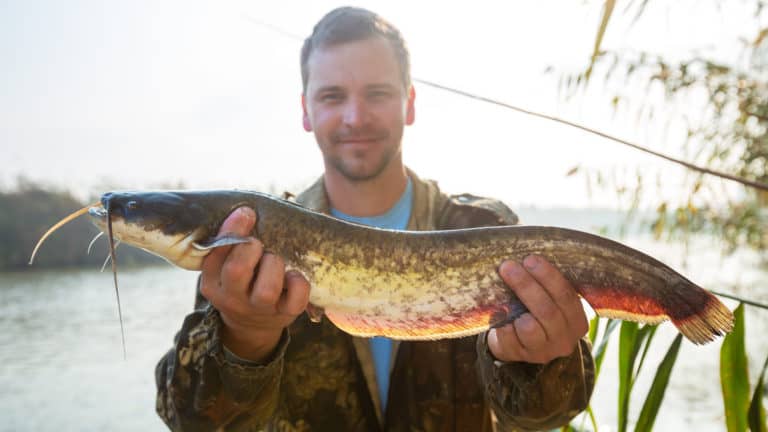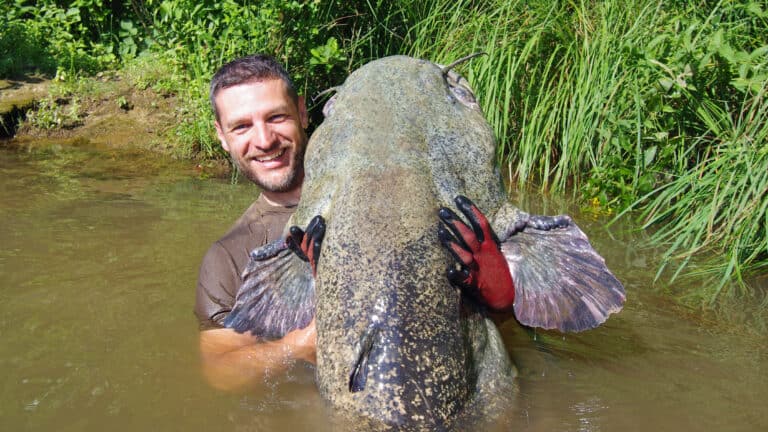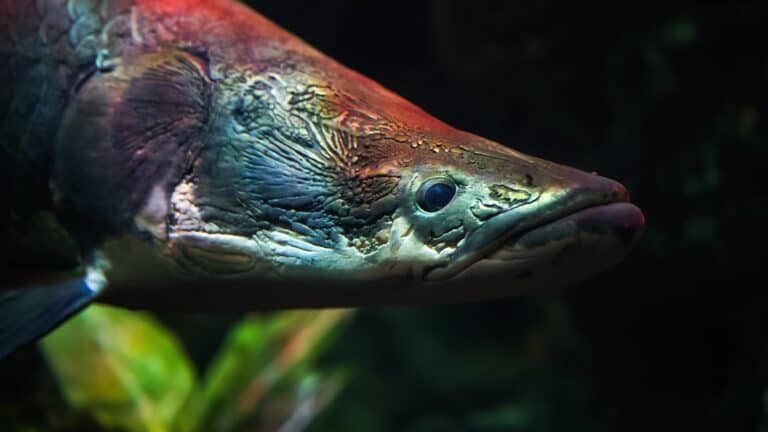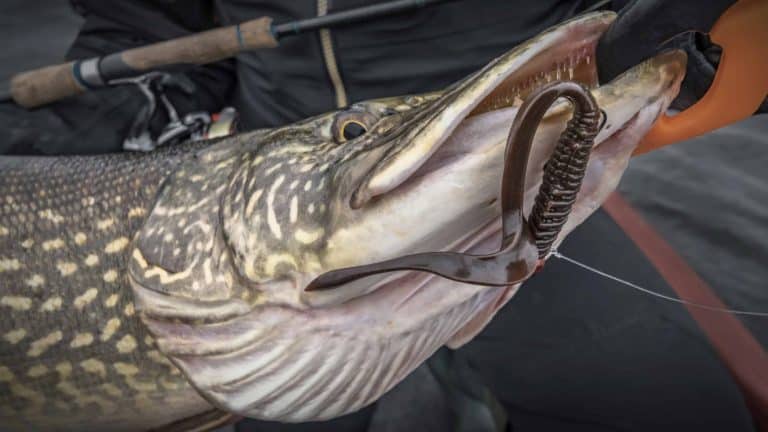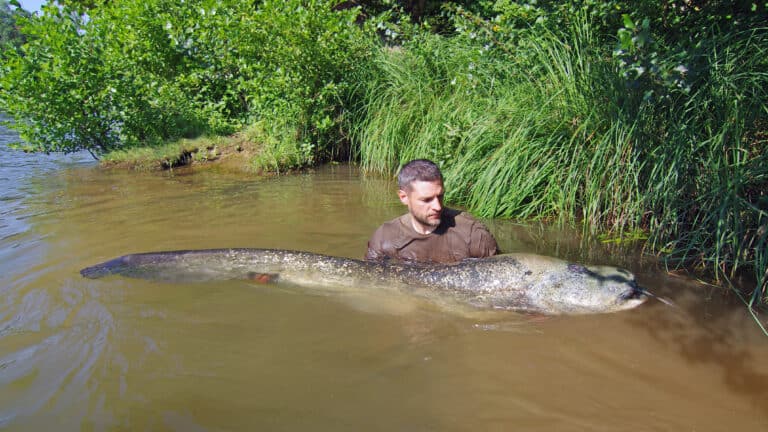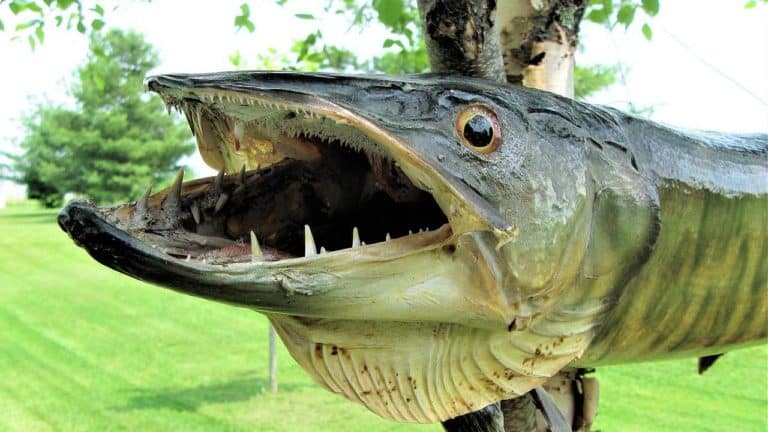Most Dangerous Catfish Species In The World

Those who’ve watched River Monsters will be familiar with the dangers surrounding different breeds of catfish. While some species are effectively harmless, there are several other species of catfish you don’t want to encounter. In this article, we’ve compiled a list of the most dangerous breeds of catfish, some of which have even been reported to go after people.
There are also 1600 species of catfish that have venomous spines so it’s impossible to collate all these species into one article. However, we have mentioned some of the more common breeds of catfish that you’re more likely to encounter in places like North America.
It’s also important to mention that many species of catfish are only mildly venomous and there are also plenty of species that aren’t venomous at all. We’ve also included fish from more secluded are rural parts of the world. So, while it’s essential to recognize what these animals are capable of, they are not something to be genuinely afraid of.
Goonch/Devil Catfish – Bagarius Yarrelli
| Scientific Name | Bagarius Yarrelli |
| Max Weight | 230lbs |
| Max Length | 200cm |
| Colour | Brown, Grey, & Yellow |
| Location | Northern India, Nepal |
The Goonch is easily the scariest-looking fish on this list. It is a fish that can only be described as Grotesque. It is a fish of freakish proportions and has a set of razor-sharp teeth. This fish looks as ugly as it does fearsome and certainly has a reputation to match.
The Goonch is found predominantly in the Northern Region of India and Nepal and they have been known to attack and eat people. With sharp, backward-facing teeth, they certainly have the dental hardware to do serious damage. However, apparently, their taste for people initially developed from them eating the remains of half-cremated bodies due to religious proceedings that often take place on the river banks of India.
Unlike most catfish, which only have rasping pads in their mouths, the Goonch has genuine teeth, hence why people often draw the comparison to sharks. Frankly, they are similar in many respects, particularly in their physical structure and weaponry.
In terms of size, these fish can grow well over 150lbs and there have been reports of them surpassing 200lbs. They are undoubtedly a massive threat to their prey but they are also large enough and strong enough to be considered dangerous to humans. The chances that you’ll ever encounter one of these fish are very slim as they are endangered and only found in a handful of locations. But regardless, it wouldn’t be a good idea to enter the water in areas where the Goonch has been found.
Piriaba – Brachyplatystoma Filamentosum
| Scientific Name | Brachyplatystoma Filamentosum |
| Max Weight | 440lbs |
| Max Length | 360cm |
| Colour | Grey & White |
| Location | Amazon and Orinoco Rivers, North Eastern Brazil |
The Piriaba is another breed of catfish that has become notorious for its appearances on River Monsters. What makes the Piriaba so intriguing is how closely it resembles a shark. Like a wels catfish, the Piriaba has a large, wide mouth with rasping pads. However, while the wels catfish almost resembles a slug, the Piriaba has a much stockier and purposeful build with a thick tail and shark-like proportions.
Like the Goonch, there have been stories of Piriaba attacking and eating humans. But unlike the Goonch, the Piriaba has no teeth meaning it has to swallow its prey whole. This means that a man-eater would have to be enormous in order to swallow even a small human. Piriaba effectively eats anything and everything, so the only thing that could prevent humans from being targeted is our size. But once these fish get big enough, there’s no reason they wouldn’t go after people. The Piriaba has supposedly surpassed 400lbs making them among the largest fish on this list.
Wels Catfish – Silurus Glanis
| Scientific Name | Silurus Glanis |
| Max Weight | 660lbs |
| Max Length | 460cm |
| Colour | Green, Yellow, White, & Grey |
| Location | Central, Southern, & Eastern Europe |
The wels catfish is the largest and ugliest catfish on this list. Outside of the water, these creatures look like grotesque slugs. However, their strange looks combined with their sheer size make them intimidating creatures. Wels catfish are massively powerful as their bodies are essentially made up of solid muscle designed for fast propulsion. While wels often scavenge, they are also predators and can generate enormous amounts of power. These fish are often fished for game throughout Europe and any catfish angler will agree that wels are among the strongest and most explosive freshwater fish in Europe.
Like the Piriaba, wels will basically eat anything, making them dangerous when they become larger. These fish can grow over 600lbs and will even eat other catfish. So there’s no reason for them not to try and consume humans if the opportunity arose. There have been several stories about wels attacking and swallowing people and children but there hasn’t been a recorded death yet. However, there have been several reports of large wels attacking people so its perfectly possible that these fish have eaten humans.
Flathead, Channel, Blue, & Bullhead Catfish
| Scientific Name | Pylodictis Olivaris, Ictalurus Punctatus, Ictalurus Furcatus, Ameiurus Melas |
| Max Weight | 100lbs, 45lbs, 150lbs, 4lbs |
| Max Length | 120cm, 65cm, 165cm, 30cm |
| Colour | Yellow & Green, White & Grey, Grey & Blue, Brown & Yellow |
| Location | North America |
Flathead, Channel, Blue, & Bullhead are all species of catfish that are commonly found throughout North America. Flathead, Channel, & Blue catfish are non-venomous however, they still have spines on their fins which can give you a nasty sting. Therefore, the main danger is a bacterial infection. Therefore, if you are unfortunate enough to be stung by a non-venomous catfish, its imperative that you still take the bite seriously and clean the wound with an antiseptic. These catfish can grow to be quite large but they don’t match the size of the European Wels.
Unlike the other catfish in North America, the bullhead has mild venom. This means a sting can cause more of a reaction but in most cases, it’s nothing serious. As with the other catfish, its important that you clean the wound thoroughly and seek medical attention if you have a bad reaction.
Candiru – Vandellia Cirrhosa
| Scientific Name | Vandellia Cirrhosa |
| Max Weight | 1.7oz |
| Max Length | 2.5cm |
| Colour | Grey, Translucent |
| Location | Bolivia, Brazil, Colombia, Ecuador, & Peru |
Unlike most catfish on this list, the Candiru isn’t dangerous because of it’s strength. The Candiru is actually incredibly small and completly scaleless which makes it dangerous because it’s been known to enter the genitals of animals and humans through the uretha. For those who are unfortunate enough to have experienced this, it can be an incredibly long and painful medical procedure in order to remove the fish.
The Candiru is also a bloodsucker which makes the notion of it feeding on you even more terrifying. The best possible way to avoid ever ecountering this fish is by ensuring that you don’t swim in any bodies of water where you know Candiru are prevelent. If you’re unsure about a lake or river in the countries where Candiru is found, it’s advisable to avoid swimming in it.
FAQs
Are all catfish venomous? – No not all catfish are venonmous but there are 1600 species that do produce venom, all varying in their levels of toxicity. However, most catfish in North America aren’t venomous and the ones that are venonmous aren’t that potent or dangerous to humans.
How dangerous are catfish? – Some catfish are effectively harmless but there are some species, as shown above, that you’d ideally like to avoid.
What should I do if I’m stung by a catfish? – This entirely depends of the breed of catfish and your experience in these situations. If you deal with catfish often and know how to properly care for any wounds, then you’ll want to clean the sting with an antiseptic to prevent infection. However, if you’re unsure of how to deal with sting wounds or if you’re unsure of which breed you were stung by, its best to seek professional help.
Are catfish aggressive? – Some species can certainly be very aggressive. Like the Goonch for instance, where sharp, backwards facing teeth and an appetite for human flesh, I certainly wouldn’t swim in it’s territory.

